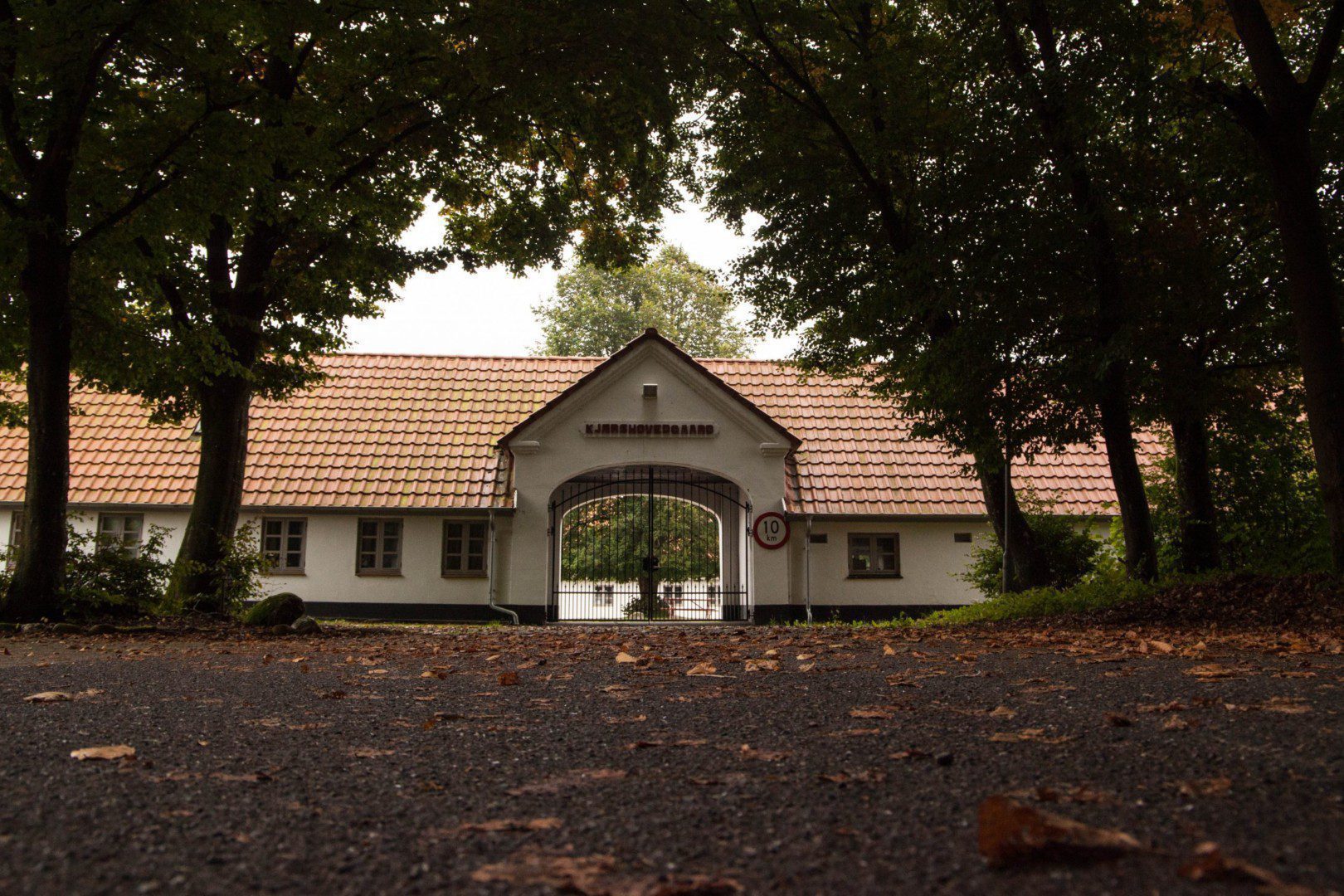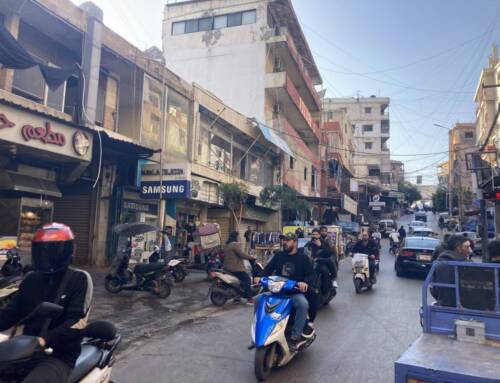Denmark strips 94 Syrian refugees of their residency permits, deeming Damascus safe for their return
Rejected asylum seekers in Denmark have three options: return to Syria, go to a third country or stay indefinitely in a ‘return center’ in Denmark.
25 February 2021
The fenced departure center of Kærshovedgård sits in a remote location in the middle of fields in the Jutland region, 24/09/2017 (Cecilia Arregui)
BEIRUT — Danish authorities have ordered Lilian Jomaa to return to a place she has never been.
Four-year-old Lilian was born in Denmark and has grown up in the town of Silkeborg, in the Jutland peninsula. Her parents fled the war in Syria six years ago, but this family of Syrian refugees has now lost their right to stay in Denmark on the grounds that Damascus is safe for their return.
Denmark used to consider that the “generalized violence” in Damascus led to automatic subsidiary protection. Since last summer, that’s no longer the case.
In 2020, immigration authorities identified 461 Syrians from Damascus province after screening 4,500 cases. So far, 94 Syrians have had their residency permits revoked (or not extended), while 179 Syrians have kept theirs. In 2021, 300 additional cases will be screened, according to immigration authorities.
Lilian’s mother, Heba Hekmat, left Syria in 2015 after the Syrian regime killed her husband in the Damascene neighborhood of Jobar. Heba fled with her daughter and son, now 11 and 10 years old, respectively. Once in Denmark, Heba married Radwan Jomaa, with whom she had Lilian.
Radwan fled Syria by crossing the Mediterranean via Egypt. His brother-in-law was imprisoned by the regime, while his nephew joined the opposition. “The regime would not be content just with arresting them, they also punished the relatives, so I decided to escape Syria,” this 61-year-old explained.
Their children speak Danish at home. “Lilian speaks better Danish than Arabic; how are my children going to be sent to Syria? We are devastated; we are living in deep fear,” Radwan said.
Radwan, who works in a pizzeria, suffers a heart and liver condition and is a cancer survivor. He asked Danish authorities to consider his medical record, but the expulsion order arrived anyway. The family has appealed to the Refugee Appeals Board, a body that takes final and non-appealable decisions.
In 2020, the board processed 53 cases of Syrians who had lost their right to stay in Denmark. In 33 cases, the Board upheld the decision of the immigration authorities to revoke asylum or residency permits, according to the Board.
Denmark is the first European country to label the Damascus area as safe for return and subsequently revoke the protection status of Syrians from the area. As such, it is “sending a signal to asylum seekers in Denmark, Europe and the region that parts of Syria are safe; it is a dangerous precedent,” Nadia Hardman, a researcher in the Refugee and Migrants Rights Division of Human Rights Watch (HRW), said. She pointed out that it is “very early” to talk about a transitional process or stability in Syria.
“The countries in the region that host far more refugees and asylum seekers will see this as a way to eventually implement blanket returns,” Hardman warned. With a population of 5.8 million, Denmark hosts 43,942 Syrians; Lebanon, with a similar population, hosts 1.5 million Syrian refugees.
Nessma Bashi, a Legal Fellow at the Washington DC-based Syria Justice and Accountability Center (SJAC), criticized Danish authorities for putting the “burden of proof” on refugees that are required to show “that they would be persecuted should they be returned to the Damascus area.” She urged Danish authorities to employ a “trauma-informed system that properly considers the accurate information of the country of origin,” adding that the Danish approach is not aligned with UNHCR country of origin information.
“There is definitively very widespread evidence showing that there are countless human right violations that people will face should they be returned,” Bashi concluded. For instance, this month, a 22-year-old man was arrested in the Damascus suburbs by Syrian regime forces “without any legal arrest warrant,” according to the Syrian Network for Human Rights (SNHR). And in January alone, SNHR documented 113 extrajudicial killings of civilians and 213 arbitrary arrests in Syria.
Waiting for the appeal
Maysa Dada is studying social work, her 23-year-old son has opened a hair salon, and her husband works in construction. But the reality of this Syrian family living in Odense, a city on Funen island, was upended in January 2021 when Danish authorities revoked their residency permits.
After losing her residency, Maysa was informed by the town council that she could not continue her studies. “I have been studying for six years to get a certificate from Denmark, and now they make me quit my studies; what am I guilty of?” asked this 39-year-old.

Maysa and her son arrived in Denmark in 2015 after applying for family reunification to join her husband who had come a year earlier. The father of her son – the fruit of a previous marriage – lives in Idlib. Maysa’s brother is a defector of the army.
Despite these circumstances, Maysa received the expulsion order. Right after, she said her sugar levels skyrocketed and she had to upgrade her diabetes medication. “We are living in stressful times in Denmark; we can’t get serenity.” Now the family is waiting for the Refugee Appeals Board’s final decision.
So is 33-year-old Damascene Nivine Rahal, who arrived in Denmark six years ago. She lives in Roskilde, near Copenhagen, and is preparing for her exams to attend university.
In August 2020, when Danish authorities reopened Nivine’s file, she informed them she had been threatened by people linked to the regime, but Danish authorities considered that her words were “not enough,” she said. Immigration authorities told her she “belonged more to Syria than to Denmark” because she had lived 26 years in Syria.
Her residency permit was revoked in October 2020. “I don’t sleep well at night; it feels like I left a physical war only to enter a psychological war,” Nivine explained.
Rejected asylum-seekers face the Danish labyrinth
In Denmark, rejected asylum seekers are obliged to leave Danish territory. But since Copenhagen has no repatriation agreement with Damascus, returns to Syria have to be voluntary. So far, to Syria Direct’s knowledge, no Syrian has voluntarily returned.
“If Denmark sends us to Syria, the moment we land in the Damascus airport, it will be our execution,” said Radwan, who has participated in several demonstrations against Assad’s rule while in Denmark. “I’d rather take my own life in a fast way than go back to Syria, be detained by the regime and have a slow death under torture,” he said.

Return to Syria is also off the table for Nivine and Maysa. “I escaped from the regime that destroyed our lives. They are still in power, how am I going to return?” Nivine asked.
Maysa converted from Islam to Christianity and her husband has received threats. She was keen on fighting back. “I struggled a lot to learn Danish. My husband and my son have jobs here; how are we going to go to another country now?” For Nivine, going to a third country seems the only alternative if her appeal is rejected.
“Our fingerprints are in Denmark; it seems impossible any other country in the Schengen area will accept us,” Radwan said, referring to the Dublin Regulation.
Can Syrian refugees who were first granted asylum in Denmark and now have had their residency permits revoked seek asylum in another European country? The answer is rather complex, according to four legal experts consulted by Syria Direct.
A priori, they cannot because under the Dublin Regulation, individuals that first claim asylum in an EU country and then try to seek asylum in a second EU country shall be returned to the first country where they applied.
That said, in reality, each European state deals with the Dublin cases differently, in accordance with their own immigration rules. Thus, Syrians may have a different answer depending on which country they go to and their own personal case.
However, the fact that Denmark cannot forcibly deport Syrians and returns have to be voluntary may hinder the claim of Syrians seeking asylum in another EU country because they cannot claim they are at risk of being sent back to Syria. Plus, Denmark is generally considered a safe country. Taking into consideration these factors, the most probable scenario is that they would be sent back to Denmark.
But again, the application of the Dublin mechanism varies from country to country, and there are cases where refugees present their asylum claim first in one EU country and then in another. It depends on each member state. For instance, if an asylum seeker lodges a claim in Spain and goes to another EU country, they tend to be returned to Spain; however, paradoxically, Spain does not tend to return refugees that have previously lodged an asylum claim in another EU country.
Ending up in a limbo
If rejected asylum seekers do not leave Denmark, Danish authorities send them to ‘return centers’ where they are forced to stay until they change their mind and leave the country.
Currently, there are 59 Syrians – including ten minors – in the three departure centers of Avnstrup, Sjælsmark and Kærshovedgård.
Avsntrup center currently hosts 303 asylum seekers (among them 12 Syrians), of which 151 are children. The center, designed for families, has a kindergarten, maternity ward and health clinic. “The residents in the center are there because they have been denied asylum, not because they have a criminal record,” according to the Danish Red Cross asylum department, the organization that runs the center.
People living in these departure centers are not considered detainees because they can leave the premises during the day and request permission to sleep outside the center. Syria Direct asked the immigration authorities to specify what restrictions of movements the residents are subject to, but they did not reply in time for the publication of this story. According to a 2017 Ministry of Immigration and Integration report, “the aliens must report to the police at the departure center three times a week.”
In Avsntrup center, asylum seekers “should document their presence at the center two times per day,” according to the Red Cross, creating a prison-like environment.
The centers of Sjælsmark and Kærshovedgård are run by the Danish Prison and Probation Centers. Sjælsmark, formerly a military base, hosts six Syrians, and Kærshovedgård, a fenced center located in a remote area, hosts 41 Syrians; it is designed for persons who are not part of a family and who do not cooperate with the authorities regarding the return.
The EU Returns Directive, which sets common rules for “return or removal of irregular migrants,” establishes a maximum detention period for undocumented people of six months (renewable for further 12 months in certain cases).
European legislators established this upper limit because “after a certain period of time,” if the removal is not implemented, the detention is no longer a tool to “facilitate” the return but rather “a punitive measure,” according to a European Union Agency for Fundamental Rights report. The aim of this upper limit was to prevent “instances of indefinite detention.”
While on paper, the rejected asylum seekers in the Danish return centers are not detained, being forced to live in a remote center and check in twice per day feels close to an “indefinite detention” situation. At least, that’s how they are perceived by the rejected Syrian refugees.
“No one will accept to go to the return centers because these camps are like prisons; why would anyone accept to live there?” Nivine asked.
“Did we escape Syria and put our lives in danger to end up in prisons-like centers in Denmark, a country that is democratic and free?” Radwan asked. “I hear that those who live in return camps live in a miserable condition. Is this moral or logical to you?”
Maysa said she will go to the courts at the European level if necessary to avoid being sent to these return centers. “We will not remain silent,” she promised.







